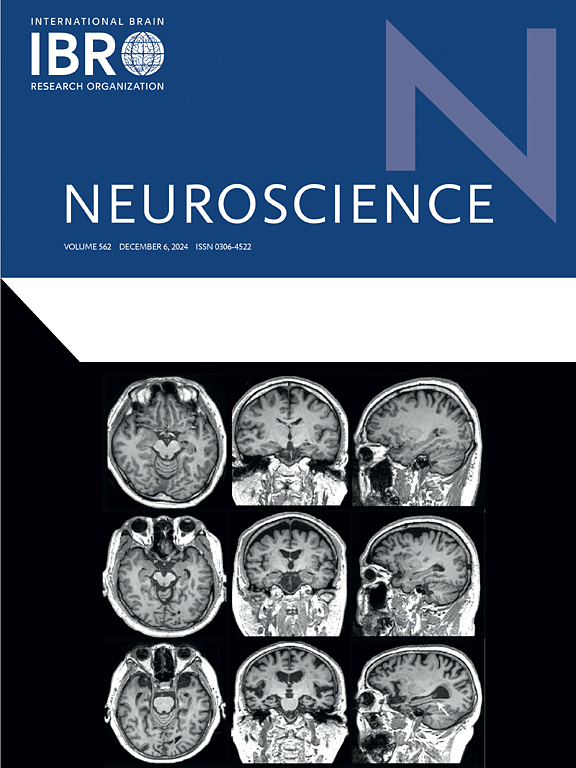内质网应激抑制减轻低氧缺氧引起的视网膜损伤:一项模拟高海拔研究。
IF 2.8
3区 医学
Q2 NEUROSCIENCES
引用次数: 0
摘要
高原视网膜病变(High Altitude Retinopathy, HAR)是一种以低气压缺氧导致视神经和视网膜损伤为特征的病理性疾病。尽管HAR具有重要的临床意义,但其潜在的病因和有效的治疗策略仍然知之甚少且有限。在这项研究中,我们使用标准化的高空模拟室开发了急性HAR小鼠模型。我们对模拟HAR小鼠进行了视网膜转录组测序和生物信息学分析,特别关注显著富集的内质网(ER)应激PERK途径。通过Western Blotting和定量实时聚合酶链反应(quantitative real-time polymerase chain reaction, qRT-PCR)实验,我们证实了HAR小鼠视网膜中存在显著的内质网应激。随后,我们采用碘化丙啶(PI)/赫斯特染色和流式细胞术分析证明,内质网应激抑制剂Salubrinal减少了小鼠视网膜感光细胞(661W细胞系)在缺氧条件下的坏死和凋亡。此外,通过透射电镜(TEM)、光学相干断层扫描(OCT)、苏木精和伊红(H&E)染色以及视网膜电图(ERG),我们证实了Salubrinal可以通过抑制PERK/eIF2α/ATF4/CHOP通路的内质网应激水平来缓解低压缺氧诱导的视网膜水肿,并增强视网膜功能。我们的研究结果表明,针对内质网应激PERK途径可能是治疗HAR的一种有希望的治疗方法,为治疗这种与海拔有关的眼部疾病提供了潜在的临床意义。本文章由计算机程序翻译,如有差异,请以英文原文为准。
Inhibition of ER stress mitigates hypobaric hypoxia-induced retinal damage: a simulated high-altitude study
High Altitude Retinopathy (HAR) is a pathological disorder characterized by damage to the optic nerve and retina due to hypobaric hypoxia at high altitudes. Despite its clinical importance, the underlying etiology and effective therapeutic strategies for HAR remain poorly understood and limited. In this study, we developed a murine model of acute HAR using a standardized high-altitude simulation chamber. We conducted retinal transcriptomic sequencing and bioinformatics analysis in the simulated HAR mice, with a particular focus on the significantly enriched endoplasmic reticulum (ER) stress PERK pathway. Using Western Blotting and quantitative real-time polymerase chain reaction (qRT-PCR) experiments, we verified that significant ER stress occurred in the retinas of HAR mice. Subsequently, we employed Propidium Iodide (PI)/Hoechst Staining and Flow Cytometry Analysis to demonstrate that the ER stress inhibitor Salubrinal reduced necrosis and apoptosis in mouse retinal photoreceptor cells (661W cell line) under hypoxic conditions. Furthermore, via Transmission Electron Microscopy (TEM), Optical Coherence Tomography (OCT), Hematoxylin and Eosin (H&E) staining, and Electroretinography (ERG), we confirmed that Salubrinal could alleviate hypobaric hypoxia-induced retinal edema and enhance retinal function by inhibiting the ER stress level of the PERK/eIF2α/ATF4/CHOP pathway in HAR mice. Our findings indicate that targeting the ER stress PERK pathway may be a promising therapeutic approach for managing HAR, offering potential clinical implications for treating this altitude-related ocular disorder.
求助全文
通过发布文献求助,成功后即可免费获取论文全文。
去求助
来源期刊

Neuroscience
医学-神经科学
CiteScore
6.20
自引率
0.00%
发文量
394
审稿时长
52 days
期刊介绍:
Neuroscience publishes papers describing the results of original research on any aspect of the scientific study of the nervous system. Any paper, however short, will be considered for publication provided that it reports significant, new and carefully confirmed findings with full experimental details.
 求助内容:
求助内容: 应助结果提醒方式:
应助结果提醒方式:


